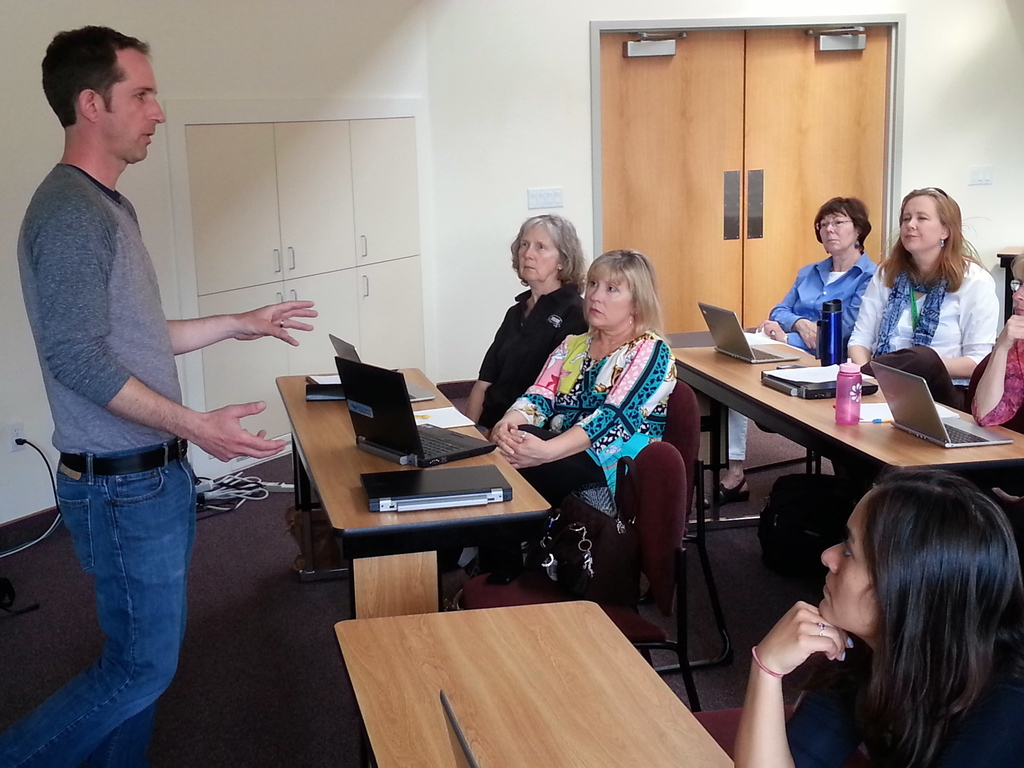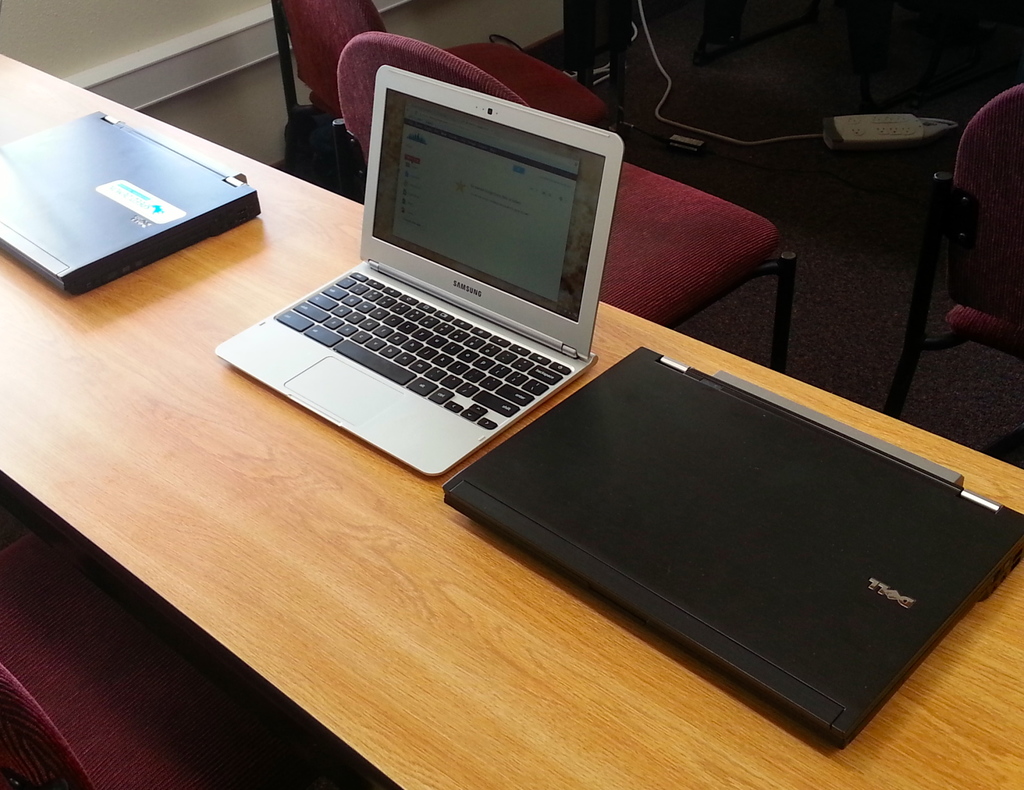In an effort to cut 75 percent off the cost of outfitting Blaine County students with mobile devices, Tim Rocco is turning to the cloud and an affordable crop of netbooks.
Rocco, Blaine County School District’s director of technology, is working with district leaders and building principals to pilot a program relying on Google Docs software and Chromebooks.

Some district teachers and principals wrote technology grants and applied their money to Samsung Chromebooks, a small, lightweight laptop that retails for $249.
Then Rocco and others learned that Google Docs cloud computing software is available free to schools and decided to pair the program with the Chromebooks.
This year, all 11 juniors at the K-12 Carey School piloted a one-to-one Chromebook program. Next year, the pilot will expand in Carey and to the alternative Silver Creek High School.
Rocco, Carey principal John Peck and Superintendent Lonnie Barber will then study the program and determine whether it is ripe for another expansion.
“One of the reasons we have gone with a slower (one-to-one) adoption is a year from now we can look to see how we’ve done and evaluate and decide later if it’s the right course,” Rocco said. “If not, we have the flexibility to change.”
When the district discussed one-to-one options, most elementary school teachers requested iPads, while most high school teachers asked for laptops. First, Rocco hopes to test the pros and cons of the less expensive Chromebooks.
“I’m not a teacher,” Rocco said. “I didn’t want to show up in a classroom and tell teachers how to teach. I just want to give them the best resources I can.”
For $5,000, the district could buy five laptops for students to share. Or the district could purchase between 18 and 20 Chromebooks – depending on the cost of management software, which the district believes could run $30 per machine.

Last year, when the state reached a one-to-one laptop lease agreement with Hewlett-Packard (a deal rescinded with the repeal of the Proposition 3 school technology law), the cost ran $293 per laptop, per year. During the four-year contract cycle, each leased laptop would have cost $1,171 – more than four times the cost of purchasing a Chromebook outright.
To be sure, a Chromebook is a lot less powerful than a laptop, and it isn’t as fully equipped. The only program it really includes is an Internet browser that can be paired with Google Docs. It doesn’t have a laptop’s memory, complex software programs or a CD or DVD drive. Creating and editing a multimedia video presentation, for example, would not be possible on a Chromebook alone.
But Rocco said the devices excel at Internet research and – thanks to Google Docs – word processing and spreadsheets used in research papers. They also boot up in about nine seconds. Rocco said some laptops took five minutes or longer to turn on and connect to the network — which could eat up nearly 10 percent on a class’ instruction time.
Often, a stripped down Chromebook is all a student needs for a paper or presentation.
“The teacher wants simple devices that do simple things well,” Rocco said. “That is where something like this shines.”
The idea is a student could take the Chromebook home for homework. Using Google Docs, any changes and updates they make on any machine anywhere would be saved and accessible by the Chromebook.
With 40 to 45 percent of the district’s students on free or reduced lunch, Rocco realizes not every student has a home computer or Internet connection. There is also a wide divide between some of the wealthiest families residing in Ketchum and Sun Valley and some of the district’s poorest.
So Rocco is working with Cox Communications to push the “Connect to Compete” program that offers families with students on free or reduced lunch high-speed Internet access for $9.95 per month.
Donna McKelvey, a seventh-grade language arts teacher at Wood River Middle School, sees benefits to expanding the Chromebook and Google Docs program.
“Honestly, the students could have a device for every minute of my class,” McKelvey said. “We are constantly needing to research and share information, whether we’re working on presentations or whatever. It just seems logical every kid should have a device.”
